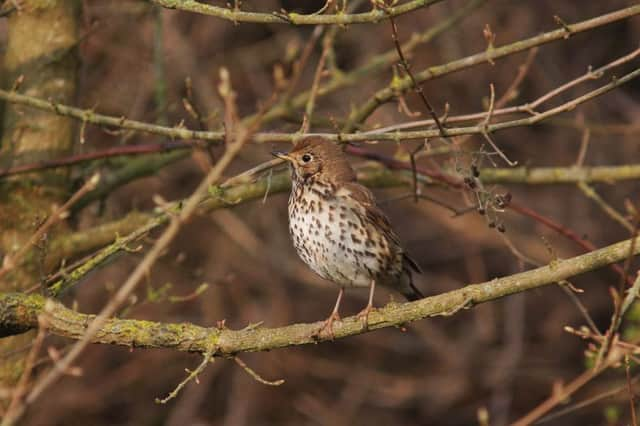NATURE NOTES: New arrivals for winter as the nights draw in


When I say ‘thrushes’ in that I include blackbirds, song thrushes and redwings, all newly-arrived from Scandinavia and further east, to spend the winter in our countryside.
On very rare occasions in my garden I see fieldfares, mistle thrushes and even an odd ring ouzel, but it is the three regular species that add to the excitement.
Advertisement
Hide AdAdvertisement
Hide AdUsually around about the end of September through to early November, I listen out for the call of a blackbird or song thrush high overhead.
Even after many years, I still find it surprising to see these hedgerow and woodland cover-loving birds flying so high, out in the open, relieved to be above land after an overnight crossing above the treacherous North Sea.
In November, I have seen small groups ofredwings and blackbirds skimming the waves as they approach the coast. How many must perish in the water is unknown but there must be a great many casualties.
When there is a big arrival of these birds, they make easy pickings for large gulls or birds of prey who loiter along the shoreline looking for the weakened, tired and vulnerable. It’s such a shame when they have come so far.
Advertisement
Hide AdAdvertisement
Hide AdDuring a spell of calm, misty or drizzly weather, as the dawn breaks, blackbirds are ‘clucking’ around the garden and in the copse next door. They fly out across the fields towards hawthorn berry laden hedgerows to refuel after the tiring flight last night.
We have two rowan trees, still with fruit, an unusual feature in itself, as in most years the berries are scoffed by multitudes of starlings, woodpigeons and local blackbirds way before now.
The foreign blackbirds and song thrushes squabble for temporary territory as they clear up the remainder.
Should a sparrowhawk fly by, 15 or 20 birds explode from cover while giving their loud alarm calls.
Advertisement
Hide AdAdvertisement
Hide AdThe hungry thrushes (and others) provide a service to the tree by allowing the seeds to pass through their digestive system to be dropped in another location where they will germinate.
If you check under a stand of pines or other thick woods you might find a dense patch of rowan and elder saplings, a sure sign that there is a communal thrush roost in the braches above during the winter.
Once the berries have gone and winter approaches, we provide apples and pears on the lawn each morning. Lovely, bold, male blackbirds will hop out from under a shrub to hack into the fruit with their strong golden bills.
Song thrushes and redwings are more timid, but on a quiet early morning you will see them staying aside from the larger birds, getting access where the fruits have been split open to reveal the flesh inside.
Advertisement
Hide AdAdvertisement
Hide AdAs the season progresses, the numbers of coastal thrushes dwindle as they have eaten the nearest berries, they move off south and west where it will remain mild and frost free all winter. Some stay in the UK while others go to Ireland, France or even Spain.
Keep an eye or more importantly an ear open for these eastern visitors, even on dark nights, while you walk the dog, the calls can be heard high in the night sky, and spare a thought for how far they have come and where they were reared in the vast expanse of taiga forests of the far north during the long daylights hours of summer.